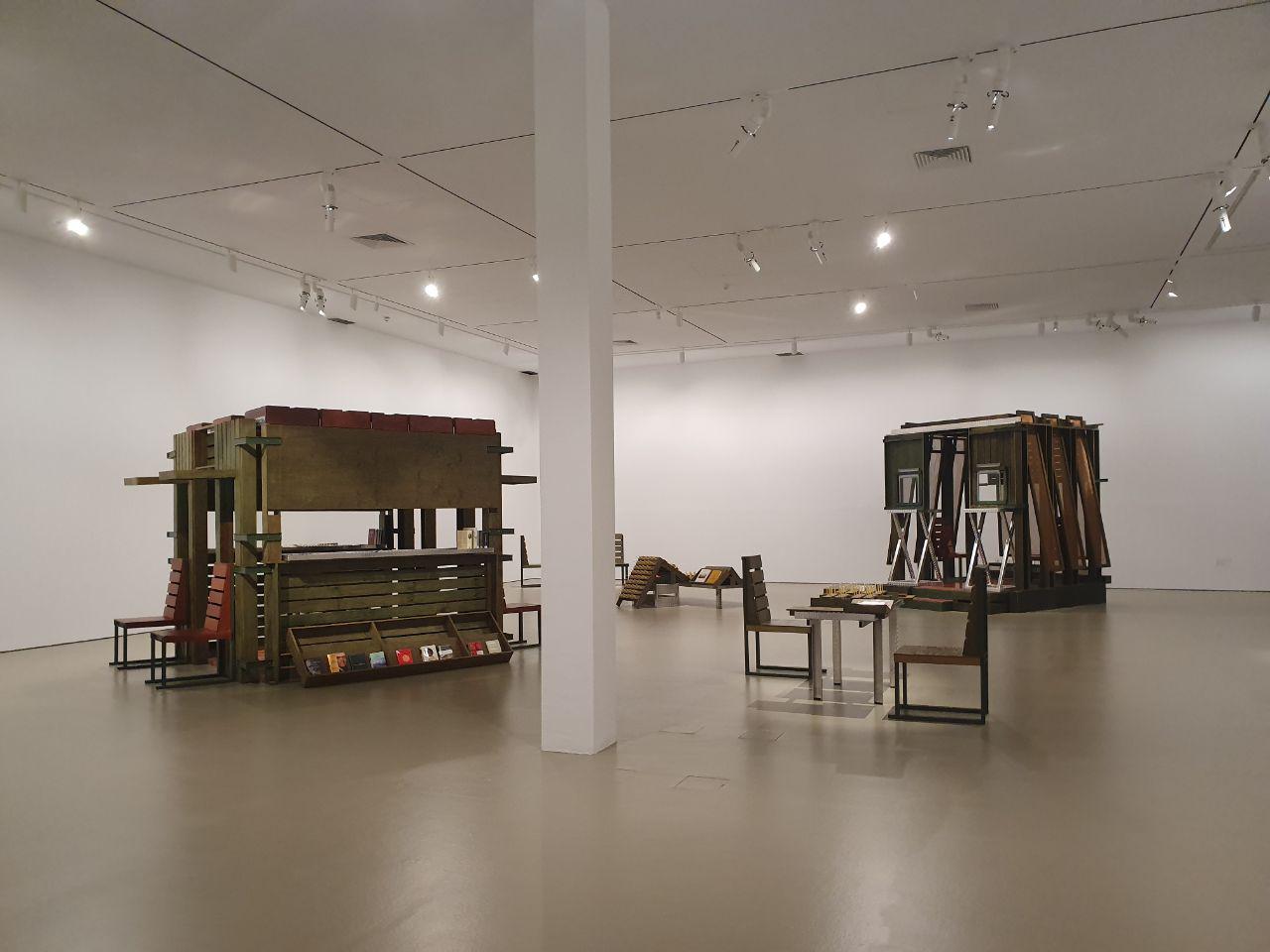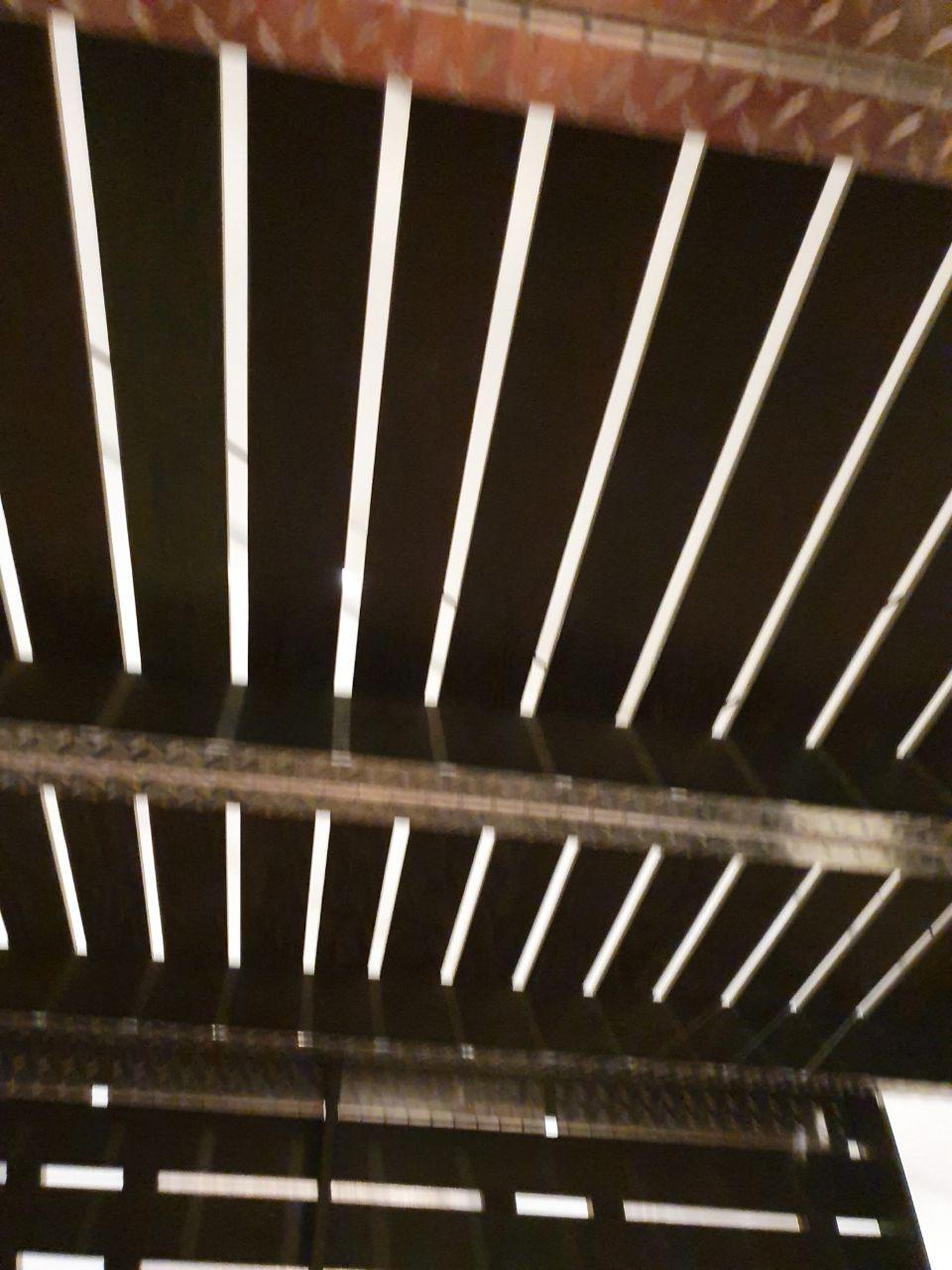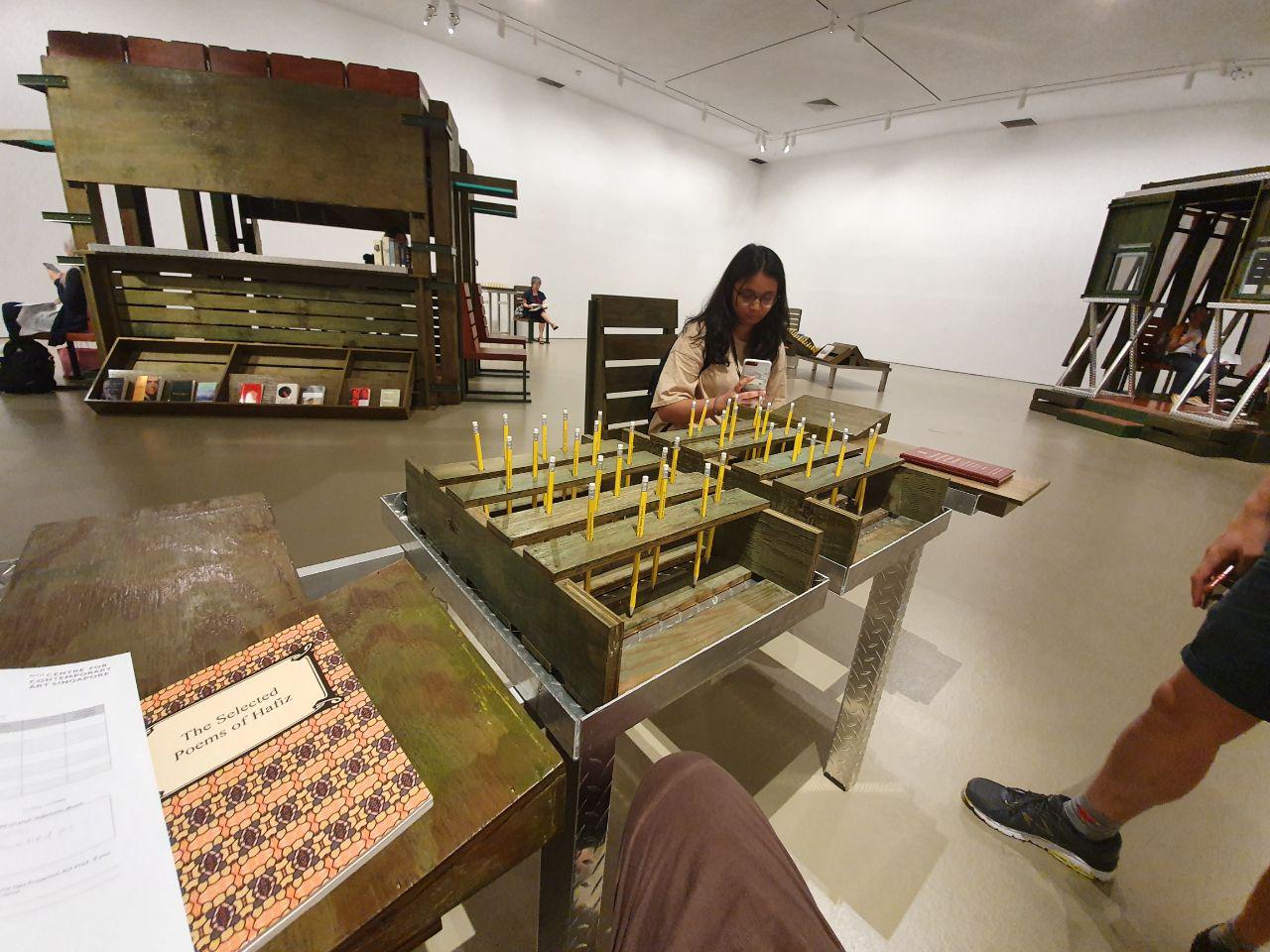Upon entering the exhibition, I was not really expecting what I saw. Was I allowed to touch anything? Why were there pencils sticking out everywhere? Why is everything wood? What is going on? What the heck is a tomb shaped like that? This is a reading room? Can I read these books here?
There were so many questions, but if I had to put a thought as my first impression, was that it mostly looked like a kampung. The simple shapes, the wood, the specific green that screamed old. I would have thought that these were all pieces meant to be outside, but it was mentioned to be for a reading room. Again, unsure if we could go into these spaces, these tree house looking boxes, and was itching to do so just because lack of childhood, until they told us we could.
Aside from the nostalgia and outdoorsy-ness however, it didn’t make sense that they were for the outdoors. Realised the ceiling was full of holes, so it wouldn’t work as a shelter for the poor soul caught in the rain, or even shade away from the sun.
It was really from being in the spaces, sitting on those chairs did I really start understanding how they worked. The tour helped me understand it better as well. A space that was inviting, but also uncomfortably so. To read for a long period of time is a commitment, and one could not be too comfortable when reading. Everything felt like a sharp edge, you had chairs that could only turn 90 degrees and not diagonally to the tables, hard wooden backings, dark green and brown surfaces, weirdly shaped book holders, and yet, they felt ideal as spaces for reading. If I was made to read I would have gotten comfortable on my bed, and promptly fallen asleep, achieving nothing. This on the other hand, was a whole system of rules and directions, and in a sense, it gave me motivation to read, to act upon these rules and to achieve what was asked: reading.
The longer I was in this space, the better I understood it, and the more at ease I felt about it. Reading Siah Armajani’s manifesto helped me understand his thoughts for creating these spaces as well. For example, he talks about “public sculpture as not a artistic creation alone, but rather social and cultural productions based upon concrete needs.” He fulfills this purpose with the reading room, with how it is styled with basic material that indicates his culture, and directed in ways that socially affect people.
On the other hand, I was rather intrigued by Armajani’s video works. The fact that they were created years ago with his basically-oversized calculator, was very impressive. Simple with their messages, some of them created optical illusions, and I was really impressed by Line.
In conclusion, while I’m no expert in contemporary art, and really didn’t take away anything from his actual works, I did learn a few things from his manifesto, simple rules to think about when creating spaces. I think his art reflected what he felt of spaces, and I think it’s memorable to have his own rules reflected onto his art.





September 10, 2019 at 4:16 pm
Good! The manifesto may be useful to return to as you start developing your own interactive spaces in this class.